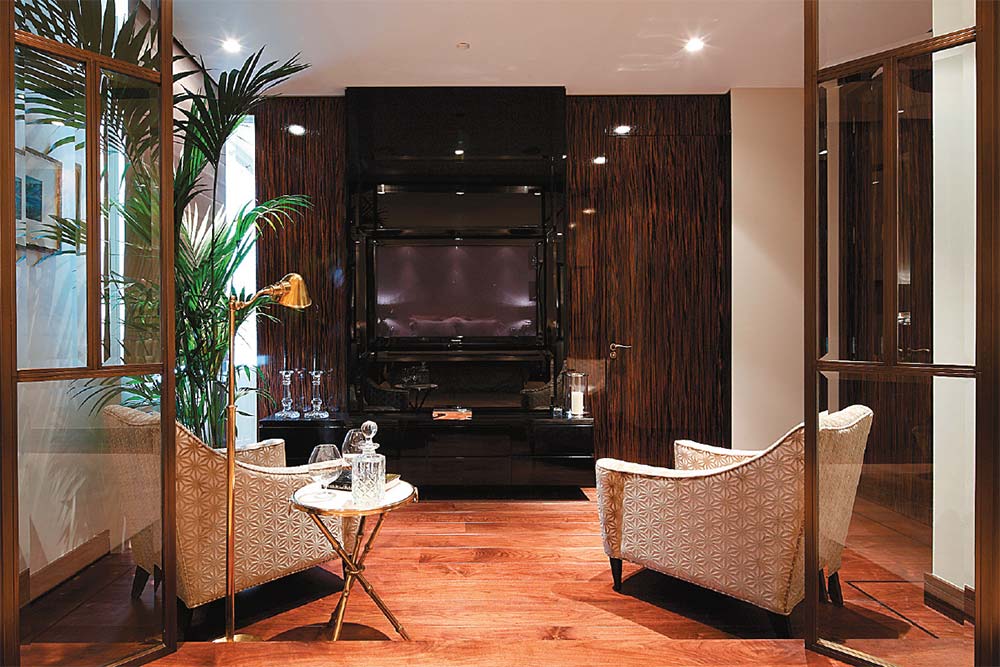When you buy a luxury product off the shelf but re-condition it to suit your — or your clients’ — requirements, does it still qualify as a brand? It’s a question that intrigues me, but London-based Faiza Seth isn’t troubled by such trivia. “We’ll probably tweak it around,” she says unapologetically. We’re talking about my hypothesis of a Ralph Lauren chair. Would Seth’s design firm change it in spite of the brand association that comes with it? “We might give it an addition of brass nails, or change the fabric,” Seth points out, “luxury isn’t just something you buy off a shelf.”
Having destroyed the raison d’être of most luxury buyers around the world, she sips her nimbu-paani with some satisfaction. Earlier, she’d mocked Indian women for “dressing in Fendi from head to toe”, arguing that you’re supposed to mix and match brands. It’s the one thing she doesn’t say of Casa Forma’s design philosophy, but reading between the lines it’s what you take away — the mix and match that allows the young firm’s design mantra to create its own distinctive style.
For clients all the way from London to New Delhi and Brazil to Hong Kong, is there one look that Casa Forma can call its own? Seth nods. What her 17-member studio of interior designers and architects aims to provide is that intangible quality called “London design”. “It’s what our clients in India want — a bona fide London firm providing interiors that typify London design,” something which, in New Delhi you might have associated with Sunita Kohli but, which, in an increasingly globalised and brand-aware world, is probably being addressed by Casa Forma and other firms from London, New York, Hong Kong and Singapore.
Seth herself is no designer, having studied economics and management, worked at Lehman Brothers, and gotten into the property development business before the global financial crash put paid to those dreams. She’s now back in the estate agency business for “bespoke, off-market properties”, but meanwhile her concentration is on tony residential and commercial properties that her firm designs for the super-rich — and the names of her Indian clients, unfortunately embargoed, are of the mouth-wateringly wealthy.
In London, she’s pitched herself against Candy & Candy, whose 80-member studio one writer describes as “notorious for their domination of high-end, hi-tech luxury apartments”; Taylor Howes Design; Staffan Tollgard and so on. They’re established businesses, but Seth isn’t easily fazed. “We work in the luxury space but we offer value for money” — comparatively, of course — at approximately ₹2,500 per sq ft, which, given the size of the average Belgravia or Knightsbridge apartment or New Delhi farmhouse, can add a tidy sum to the cost of a property.
Casa Forma is now opening its New Delhi “show house”, a site office in Chattarpur from where its “London-based team dedicated to India” that currently commutes or Skypes between London and Delhi, will handle its Indian customers. It is something Seth has been looking forward to, given that “there’s no competition” — locally, she means.
Certainly, there’s nothing like the Casa Forma model in India where a business head has put into place “systems and procedures” because “design companies run by designers don’t know how to run businesses”. Nor is it taking away the market from established companies in India such as Casa Paradox or the glitzy La Sorogeeka, or produce-based design shops such as Viya Home, Klove or Raro and their hundreds of clones. “Here” — and Seth is aiming for fact rather than snobbery when she says this — “nothing compares in quality.”
It could be the reason Casa Forma’s India plans include a brick-and-mortar store and product line. Perhaps that’s when I should ask Seth how Casa Forma might react to others re-customising its designs, as Casa Forma currently does to Ralph Lauren & Co.











